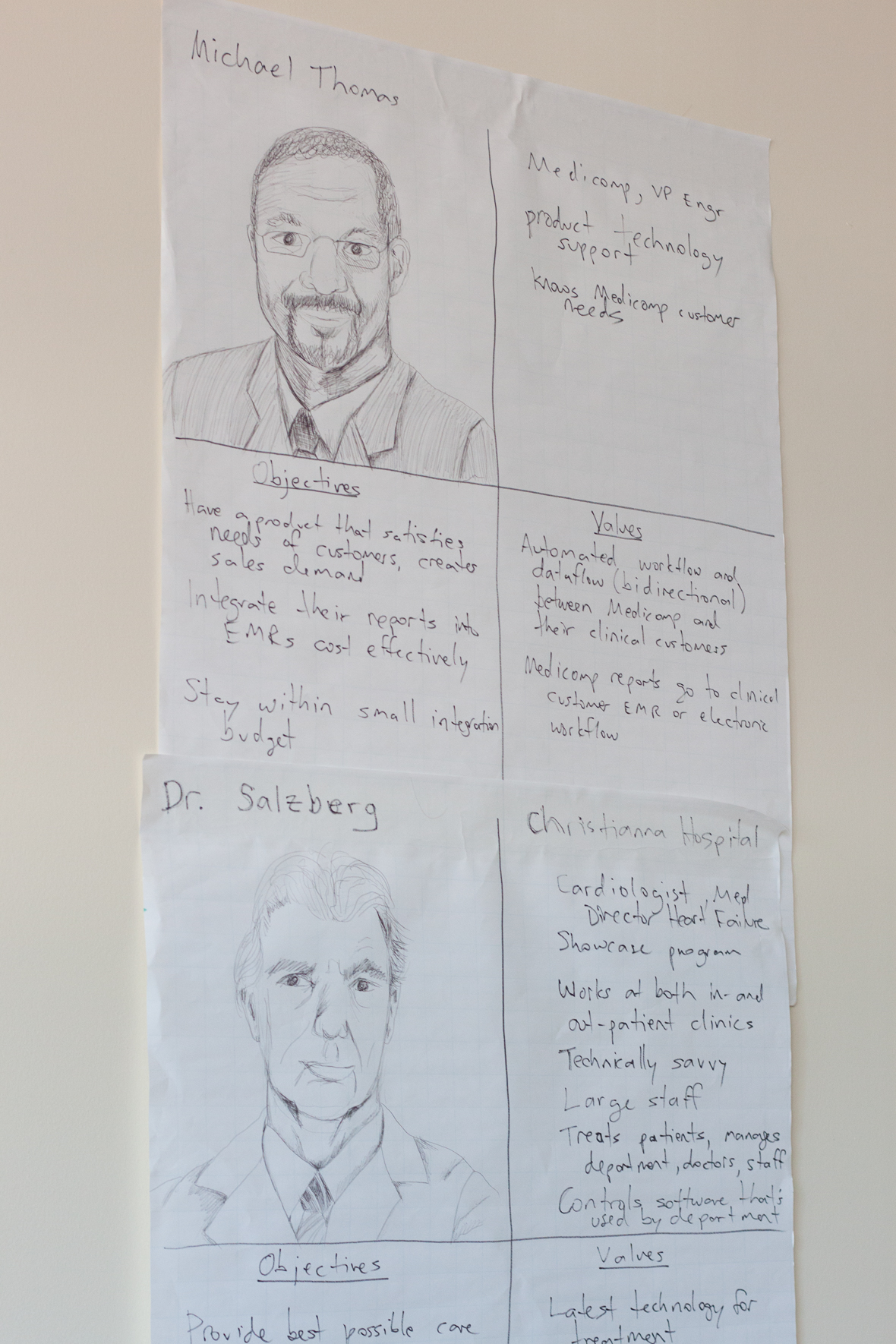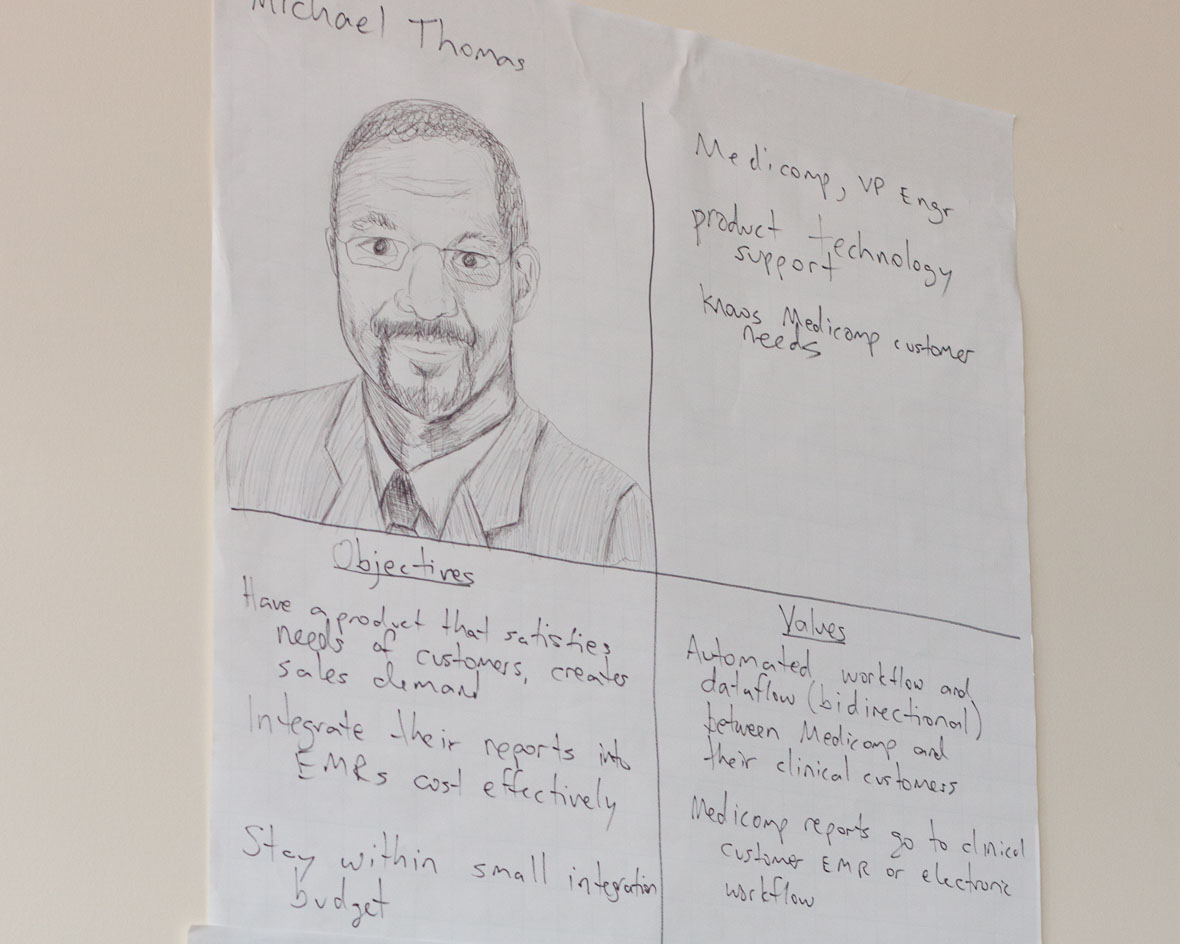Article summary
Introducing Human-Centered Design doesn’t have to be complicated. It isn’t a monolithic process that has to be applied across an entire organization before it works. Human-Centered Design is a discipline, a way of thinking and framing context, that provides value incrementally throughout the lifecycle of product design, development, support, and beyond. You can start simple, wherever you are in a product lifecycle, and begin reaping value from it immediately.
Start Simple
Human-Centered Design, boiled down to its core, involves grounding yourself in the desires of your target users and then driving design and implementation from that foundation. Ideally, the understanding of those desires is gleaned through research with real users.
Provisional personas
 Start by writing down who those users are and what you believe their desires are. Do that as an exercise with other people who are involved in the design of the product, and you’ll start building consensus around what you believe about your users. Share the documents with the product design and development team, and use these documents as context when decisions need to be made.
Start by writing down who those users are and what you believe their desires are. Do that as an exercise with other people who are involved in the design of the product, and you’ll start building consensus around what you believe about your users. Share the documents with the product design and development team, and use these documents as context when decisions need to be made.
Congratulations! You just wrote up a set of provisional personas! You can treat these personas as a hypothesis to be tested against. (We call them “provisional personas” because they’re based on assumptions rather than more direct research.)
User scenarios
Another simple step that you can take is writing user scenarios. Scenarios put users into a specific context and describe how your product fills a need in that context. You can tie the scenario to existing product features if you have that level of detail, or leave it less specific. Both types of scenarios are useful.
Here are two examples using Jane, a 29-year-old product marketer returning home after a business trip:
- Less specific: “Jane’s plane lands at the airport, and the captain announces that cell phones may now be used. Using her phone, Jane schedules an Uber ride to meet her outside the airport in 45 minutes.”
- More specific: “Jane’s plane lands at the airport, and the captain announces that cell phones may now be used. Jane logs in to the Uber application on her phone and taps through to the ride scheduling screen. She schedules a ride to meet her in 45 minutes, turning down the option to wait 60 minutes and get a price break (she’d rather get home more quickly). She sees a confirmation that a black Toyota Sienna will be there to pick her up.”
These scenarios can help build further consensus about context for the product. Features often have tradeoffs in different contexts, and the scenarios can help identify priorities and solidify agreement on a direction for the product.
Start Now, Wherever a Product Is in Its Lifecycle
If a product is still only a handful of ideas and sketches, now is the perfect time to do user research, test prototypes, and validate or invalidate assumptions. Testing early means testing cheaply.
If you’re evaluating a tremendous number of possibilities in bottom-up design discussions, shifting perspective to focus on user needs can help you rise above analysis paralysis mode. A clear set of users and scenarios drives alignment on the most important use cases and acceptable tradeoffs.
Even well-defined products that are deep in development benefit from grounding in concrete user desires and scenarios. When product features are inevitably questioned or need to shift, the connection to those same desires and scenarios helps formulate testable hypotheses to move the conversation forward.
For already-launched products, documenting the desires and scenarios that the product was based on provides a foundation for evaluating whether future products should be based on those same desires and scenarios. It may also reveal surprising differences of perspective among design team members.
Start
Human-Centered Design doesn’t have to be complicated, a big investment, and it is not a rigid process that must start at a particular phase in a product’s lifecycle. It is a discipline that provides value everywhere: grounding decisions in truthful, agreed-upon understanding of users’ desires. It’s always a good time to start.

